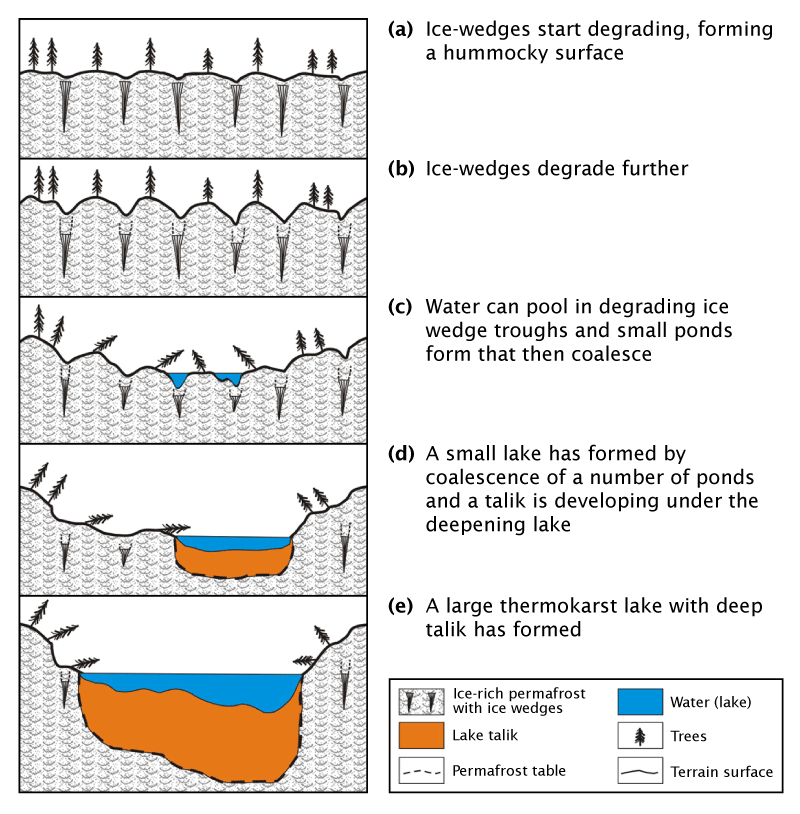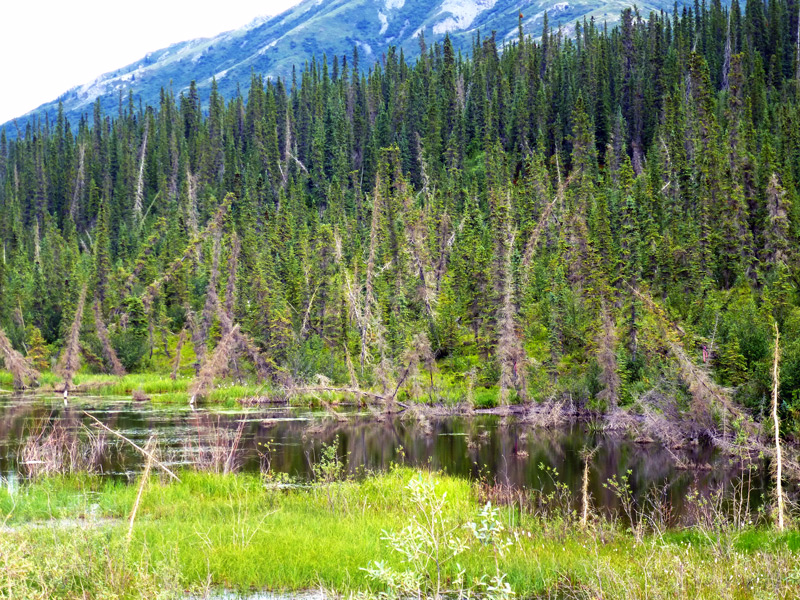Story Map »Thermokarst Lakes«: Slide 2
Formation of Thermokarst Lakes
So, is permafrost the reason there are so many lakes in the Arctic? Yes, permafrost plays an important role. Figure 2 explains the process.
As the ground ice in the permafrost begins to melt (a and b), the surface begins to subside and basins form in the formerly flat surface where small ponds are forming (c). Over time, the ground continues to sink in and small ponds unite into a small thermokarst lake that does not freeze to the bottom anymore and maintains liquid water year-round (d). This development leads to more rapid growth and deepening, as the relative warmer water effectively thaws underlying permafrost. Finally, a large lake has grown due to continued sinking and widening (e).

Figure 2: Process of thermokarst lake formation (source: see last slide).
In areas of continuous permafrost, the formation of a thermokarst lake results in the formation of a permanently thawed zone, a so-called »talik«, under the lake. This is the reason: Typically, a thermokarst lake very effectively takes up heat during the summer and can dissipate it to the underlying permafrost sediments, eventually thawing the ground and resulting in the formation of a talik. Melting ground ice in the underlying permafrost adds to further sinking of the lake bottom and increases the volume of the lake basin.
By the way, the tilting trees shown in Figure 2 are not the result of an artist's imagination. Such »drunken trees« are common in freshly degrading permafrost landscapes due to the destabilization of the terrain surface and soils (see Figure 3).

Figure 3: »Drunken trees« at a lake shore in July 2015, Brooks Range, Alaska (Photo: Ingmar Nitze).
Can you spot drunken trees in the imagery? As the lake is situated right next to the Dalton Highway, you can also see the trees in
Google Street View.
